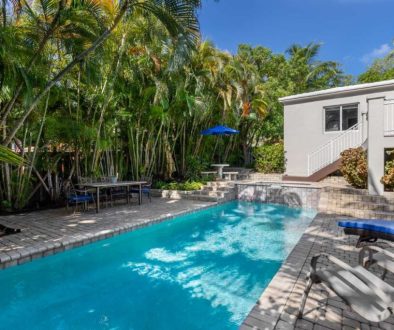The Best Ways to Advertise Commercial Property for Lease
The Best Ways to Advertise Commercial Property for Lease
In the world of real estate, the effective leasing of commercial properties can significantly impact a landlord’s bottom line. With competition intensifying, finding the right strategies to advertise commercial properties for lease is essential. This blog post delves into the best methods for promoting commercial real estate, focusing on both traditional and digital marketing approaches. We’ll explore effective advertising techniques, the importance of targeted marketing, and tips to enhance property visibility.
Introduction
Leasing commercial property can be a profitable venture, but it also requires a strategic approach to attract the right tenants. With various types of commercial properties, from office spaces to retail establishments, understanding the market and potential tenants’ needs is vital. This article will outline the best practices for advertising commercial properties for lease, emphasizing innovative strategies that can set your listing apart in a crowded marketplace.
Utilizing Online Listings
- Online listing platforms are essential for reaching a broad audience of potential tenants. Websites such as Zillow, LoopNet, and Realtor.com allow property owners to showcase their listings to a vast audience.
- According to a 2022 survey by the National Association of Realtors, over 90% of home buyers and an increasing number of commercial tenants begin their property search online. Therefore, having a strong online presence is crucial.
- To maximize effectiveness, property owners should ensure their listings include high-quality images, detailed descriptions, and crucial information such as square footage, location, amenities, and asking rent. For instance, a retail space listing that features bright, inviting images and a comprehensive overview of the nearby foot traffic can attract more potential renters.
Leveraging Social Media Marketing
- Social media platforms are powerful tools for advertising commercial properties. With billions of users on platforms like Facebook, Instagram, and LinkedIn, businesses can target specific demographics based on location, interests, and behaviors.
- Creating visually appealing posts that highlight key features of the property can capture the attention of prospective tenants. For example, a vibrant Instagram post featuring interior shots of an office space can entice viewers and encourage them to seek more information.
- Additionally, utilizing paid advertising on social media can further enhance visibility. Targeted ads can be directed towards businesses looking for commercial space, increasing the chances of attracting the right audience.
Implementing SEO Strategies
- Search Engine Optimization (SEO) is critical in ensuring your commercial property listings appear in relevant online searches. By utilizing keywords that potential tenants are likely to search for, landlords can increase their property’s visibility.
- For instance, including terms like “commercial office space for lease in [Location]” in website content, blog posts, and listings can improve search rankings on search engines such as Google.
- Additionally, creating content that provides value, such as blog posts about local market trends or tips for businesses starting in the area, can establish the property owner as a knowledgeable resource and drive traffic to their listings.
Networking with Local Businesses and Professionals
- Networking can yield significant benefits when advertising commercial properties for lease. Building relationships with local businesses, real estate agents, and brokers can lead to referrals and recommendations.
- Attending industry events, chamber of commerce meetings, and local business gatherings allows property owners to connect with potential tenants and industry professionals who may have clients seeking commercial space.
- By fostering these relationships, landlords can gain insights into the local market and tenant needs, tailoring their advertising strategies accordingly.
Hosting Open Houses and Property Tours
- Open houses and property tours can create a personal connection between potential tenants and the property. Inviting interested parties for a walkthrough allows them to envision their business in the space.
- During these events, landlords can provide information about the property, surrounding area, and leasing terms while addressing any inquiries directly. A well-organized tour can leave a lasting impression, increasing the likelihood of lease agreements.
- To boost attendance, property owners can promote these events via online listings, social media, and local community boards.
Utilizing Email Marketing Campaigns
- Email marketing remains a cost-effective way to reach potential tenants directly. By building a mailing list of interested parties, landlords can send targeted notifications about available properties, upcoming open houses, or special leasing offers.
- Crafting engaging email content that highlights the unique features of each property can pique interest and encourage recipients to explore further.
- Including a clear call-to-action (CTA), such as “Schedule a Tour Today” or “Inquire About Leasing Options,” can motivate readers to take the next step.
Engaging with Professional Real Estate Agents
- Real estate agents specializing in commercial properties can offer valuable insights and connections in the leasing process. Partnering with experienced agents can help landlords tap into their networks and expertise in advertising commercial properties.
- Agents have access to multiple listing services (MLS) and can promote properties more extensively than individual owners might achieve alone.
- By leveraging their knowledge of market trends and tenant requirements, agents can assist property owners in setting competitive leasing rates and crafting attractive marketing strategies.
Creating High-Quality Marketing Materials
- Professional marketing materials, such as brochures and flyers, can enhance the appeal of a commercial property. These materials should include high-resolution images, detailed descriptions, and key selling points about the property and its location.
- Incorporating testimonials or case studies from other tenants can also provide social proof that may encourage potential tenants to consider leasing.
- Distributing these materials at networking events, local businesses, and community boards can increase visibility and attract interested renters.
Showcasing the Property’s Unique Selling Proposition (USP)
- Every commercial property has unique features that can serve as its selling points. Identifying and highlighting these attributes can set your listing apart from the competition.
- Whether it’s a prime location, unique architectural design, or additional amenities like parking or outdoor space, showcasing these elements in all marketing efforts can attract more leads.
- For instance, if a property is located near a bustling shopping district or has easy access to public transportation, these points should be prominently featured in all advertising materials.
Monitoring and Adjusting Marketing Strategies
- The commercial real estate market is continually evolving, and monitoring the performance of advertising strategies is crucial. Utilizing analytics tools can provide insights into which marketing efforts yield the best results.
- Regularly reviewing and adjusting strategies based on performance metrics can enhance effectiveness. For example, if social media ads lead to higher engagement than traditional flyers, allocating more resources to digital marketing may be prudent.
- Staying adaptable and open to change can ensure that advertising efforts remain relevant and effective in attracting potential tenants.
Understanding Local Market Trends
- Knowledge of local market trends can inform advertising strategies for commercial properties. Understanding factors such as vacancy rates, rental prices, and emerging business districts can provide landlords with insights into tenant demands and preferences.
- Conducting market research and engaging with local real estate professionals can provide valuable data that informs marketing efforts, ensuring they align with current market conditions.
- Additionally, being aware of economic changes that may affect leasing trends can help property owners proactively adjust their strategies.
Utilizing Virtual Tours and 3D Walkthroughs
- The rise of technology has transformed how properties are showcased. Offering virtual tours and 3D walkthroughs can provide potential tenants with an immersive experience of the property from the comfort of their location.
- Virtual tours are especially beneficial for out-of-town tenants or those unable to visit the property in person. They can explore the space, assess its suitability for their business, and visualize how they would set it up.
- Including these features in online listings can significantly enhance engagement and interest, setting properties apart in a competitive market.
Conclusion
In conclusion, advertising commercial properties for lease requires a multifaceted approach that blends traditional marketing with innovative digital strategies. By utilizing online listings, engaging with social media, and networking with local businesses, landlords can effectively reach potential tenants. Creating high-quality marketing materials and employing modern technologies like virtual tours can further enhance visibility and attract interest. Understanding market trends and being adaptable in marketing strategies can ultimately lead to successful leasing outcomes.
If you’re ready to advertise your commercial property for lease, consider leveraging these strategies to maximize your reach and effectiveness. Contact us today to explore how we can assist you in your leasing journey!



